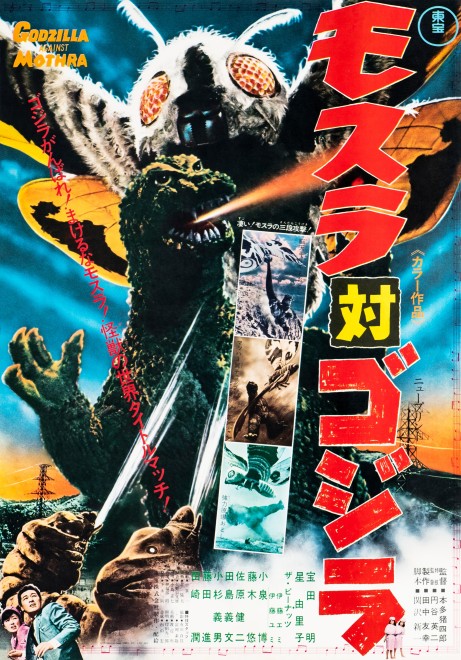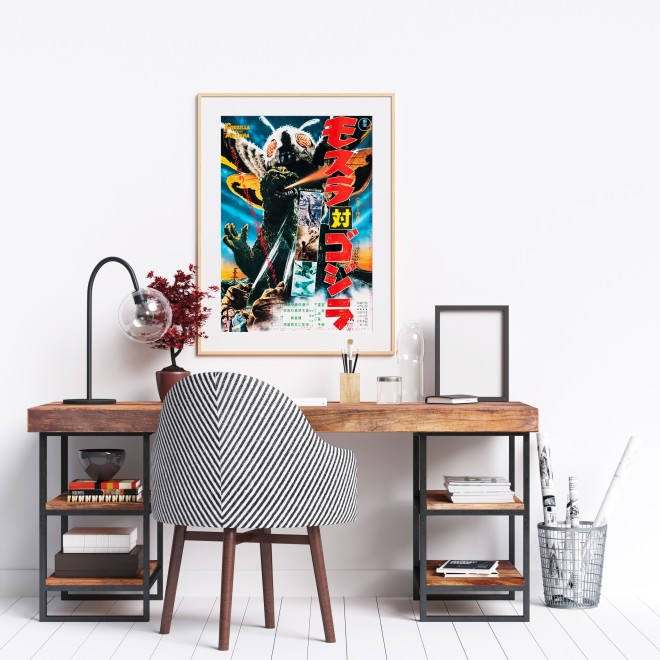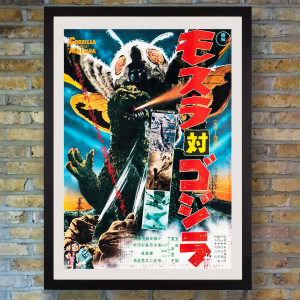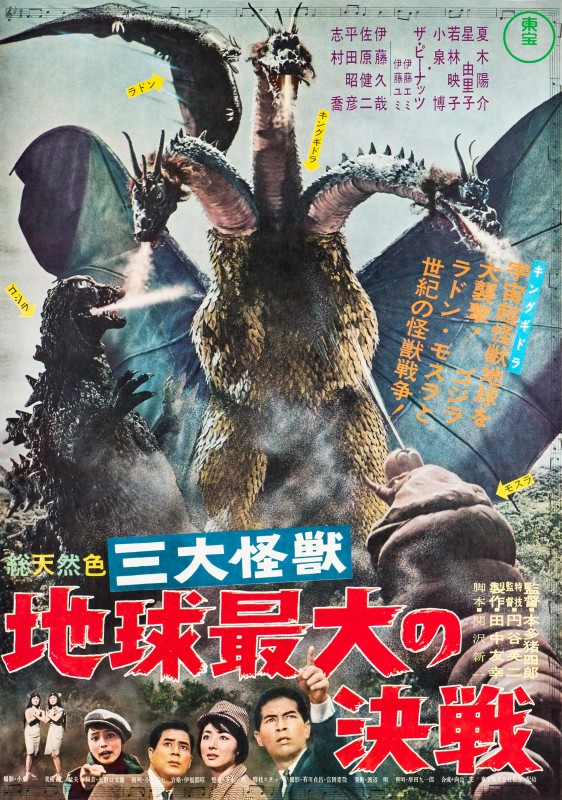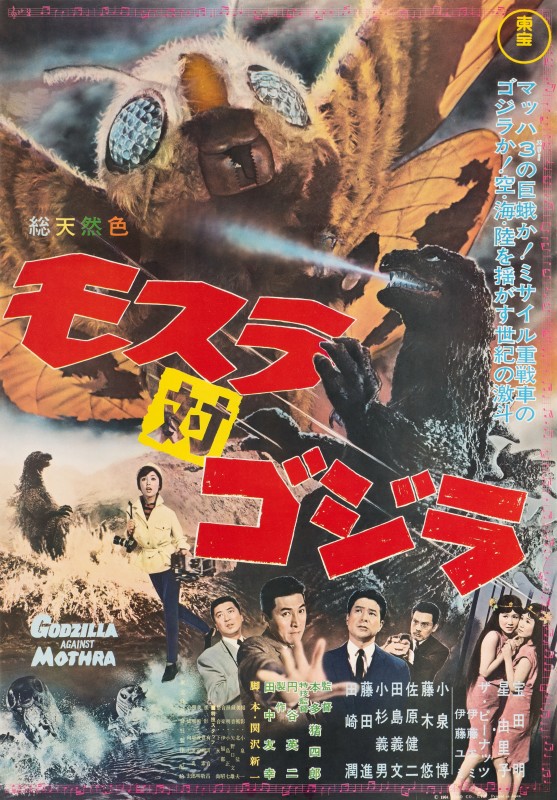Giant moth-god Mothra takes on the King of the Monsters on this dynamic Japanese B2 poster for a 1970 re-release of Ishiro Honda's kaiju classic Mothra vs. Godzilla.
Inspired by a successful 1952 re-release of 1933’s US monster breakthrough King Kong, the ongoing fallout from the atomic attacks on Hiroshima and Nagasaki, and the anti-nuclear sentiment following the 1954 Lucky Dragon 5 fishing boat incident, Tokyo’s Toho Studios released Ishiro Honda’s Godzilla in late 1954 – the giant radioactive creature emerging from the depths of the ocean and rampaging through Tokyo serving as a harrowing metaphor for Japan’s post-war atomic anxiety and the destruction unleashed by man upon himself. Commonly regarded as the first kaiju (monster) film, the smash success of Godzilla would spawn a 32 film franchise, with the first fourteen sequels of the Showa era (1954-1975) introducing new adversaries for the iconic lizard such as Mothra (a giant moth), Rodan (a giant Pteranodon), King Kong and arch-nemesis King Ghidorah (a three headed dragon beast). Long before the Marvel Cinematic Universe, Toho were craftily interconnecting stories with standalone kaiju features, crossovers, team-ups and full-on monster mashes, with each kaiju either fighting with or against Godzilla.
Second only to Godzilla in her number of onscreen appearances, the naturally peaceful deity Mothra is one of the few kaiju to have emerged from her own standalone feature in Honda’s 1961 Mothra. The benevolent insect-god comes to the aid of mankind when Godzilla threatens to destroy Japan in the fourth instalment of the Godzilla franchise Mothra vs. Godzilla, released in Japan in 1964 as Mosura tai Gojira and as Godzilla vs. The Thing in the United States. Their clash marked the final Showa-era appearance of Godzilla as a malevolent antagonist rather than an unlikely hero, with the pair going on to become necessary allies in the next feature in the franchise, Ghidorah, the Three-Headed Monster.
Condition
Very Good (B+)
Unfolded, not backed. Very soft diagonal scoring along upper edge, which is not very visible or distracting. Faint discolouration to lower edge. Image and colours otherwise excellent.
